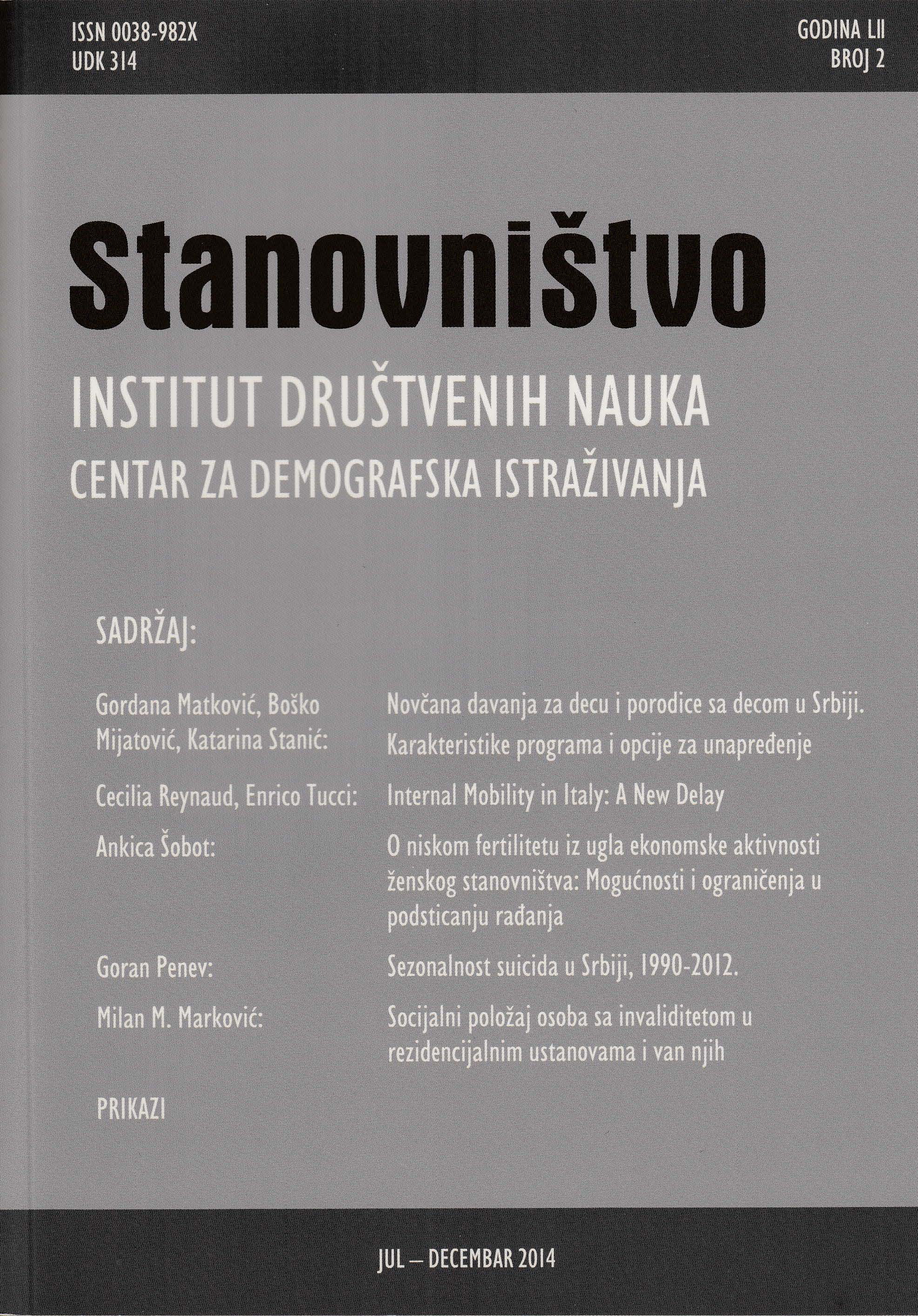Novčana davanja za decu i porodice sa decom u Srbiji
Family/Children Cash Benefits in Serbia
The Analysis and Policy Recommendations
Author(s): Gordana Matković, Boško Mijatović, Katarina StanićSubject(s): Social Sciences, Sociology, Family and social welfare, Welfare services
Published by: Институт друштвених наука
Keywords: financial social assistance; child allowance; maternity/parental benefits; birth grant
Summary/Abstract: Around 400 thousand children in Serbia are covered with cash-benefits targeting poor children representing 31.7% of the total number of children in 2011. Additionally, around 60 thousand families receive birth grants that is more than 90% of the newly born. When it comes to child-birth related leaves, there were around 37 thousand beneficiaries in 2012. This means that around 50% of the newly born children’s parents are covered with maternity/parental leave, while the coverage of employed mothers is almost full. Coverage of the poor children, particularly by the financial social assistance (FSA), can be considered inadequate. When it comes to targeting (vertical efficiency), FSA is targeted quite well, while there is scope for improvement of the inclusion error within the child-allowance program. When the adequacy of cash benefits targeting poor children is analyzed from the perspective of meeting the basic needs, then the amount is at the verge of being acceptable and differs for different kinds of families – single parent and families with very young children (0-2) being better off. However, when compared to the minimum wage, the cumulative amount of FSA and child allowance is lower only for one- child families. Total expenditures for cash-benefits connected to children amount to 1.4%of GDP - 1.21% being related to ESSPROS family/children function and 0.18% for the FSA for families with children. When compared to the EU, the total expenditure is below the EU average, with the birth related expenditures being higher and child allowance lower than the EU average. The first group of recommendations for cash benefits aimed at families with children relate to the improvement of adequacy and coverage of benefits aiming at poverty reduction, while respecting budget constraints. The increase of benefits for children above 14 years old – increase of child allowance or/and assigning higher weights (0.5 instead of 0.3) for the FSA’s equivalence scale, seems the least controversial measure. When it comes to child allowance benefits, comparative analysis shows that it is more important to increase the coverage rather than to increase the amount. Elimination of requirement for the parents to be covered with health insurance, allowing child allowance right for 4 children (instead of the first 4 children in the family) and relaxation of property criteria could act toward this end. Both from the perspective of improving the coverage and better targeting, the cadastral revenue as eligibility criteria for agricultural households should be replaced with some more realistic criteria. When it comes to child-birth related leaves, due to evidence of misuse of maternity/parental leave benefit by formal employment registration just a few months before child’s birth, one of the recommendations is to prolong the benefit calculation period, while at the same time extending the coverage for women with flexible jobs. Also, the introduction of flexible arrangements for parental leave, such as a choosing different combinations of benefit level and leave duration, part-time work and similar. Speaking of birth grants, there are advantages of introducing one-off payment instead of payment in installments, which actually implies returning to the model before changes were introduced in 2005. In addition, indexation of property threshold should be introduced. Finally, there is a need for benefits’ consolidation and simplification of administrative procedures.
Journal: Stanovništvo
- Issue Year: 52/2014
- Issue No: 2
- Page Range: 1-20
- Page Count: 20
- Language: Serbian

